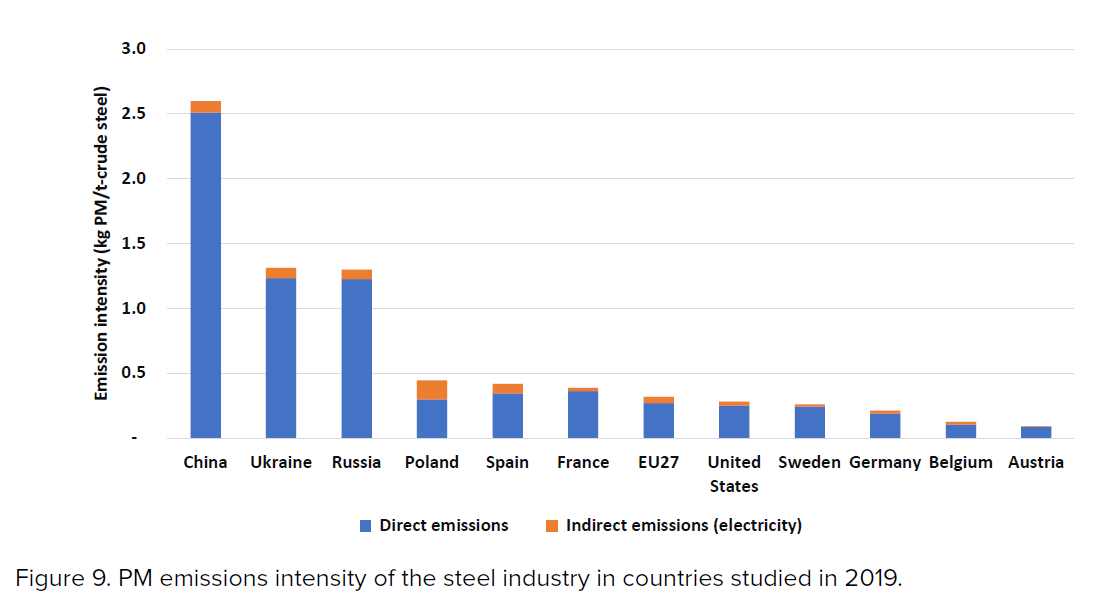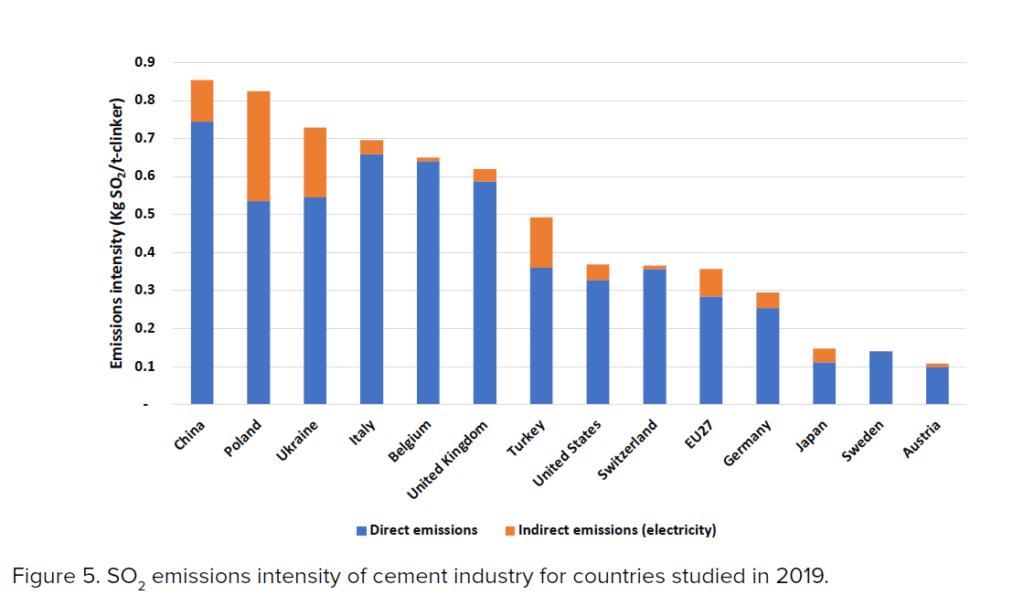U.S. Poised to Lead on Clean Cement and Steel
The following blog post was authored by Deputy Research Director Justin Stofferahn.
Two new reports released by Global Efficiency Intelligence (GEI) add to the evidence that policies prioritizing clean manufacturing can be a win-win-win for clean air, worker and community health, and good union jobs. The reports—which were commissioned by the Sierra Club in partnership with BlueGreen Alliance—compare air pollution levels from steel and cement production in various countries.
Air Pollution from Steel and Cement
The U.S. Environmental Protection Agency (EPA) identifies six common air pollutants. These “criteria” air pollutants are associated with a range of adverse health impacts, including respiratory and cardiovascular problems and, in some cases, premature death. Industrial air pollution contributes to elevated cancer risks for more than 250,000 people in the United States each year. Due to long-standing environmental injustice, these risks are highest in Black communities.
The GEI studies focus on four such criteria pollutants:
- Sulfur dioxide (SO2);
- Nitrous oxides (NOx);
- Non-methane organic volatile compounds (NMVOCs); and
- Particulate matter (PM).
Because of limited data availability, the study does not include carbon monoxide and lead, the two other criteria air pollutants identified by EPA. For each of these four pollutants, the studies calculate the emissions intensity of steel and cement production—the average emissions per ton of steel or cement produced—in various countries. This calculation makes it possible to compare the air pollution impacts of steel and cement production in countries across the globe.
Impact on Fenceline Communities
Industrial facilities are often located in communities of color. The concentration of industrial air pollution and its adverse health impacts in a number of U.S. communities of color have further exacerbated racial inequities. These impacts are felt at a highly local level and therefore cannot be captured adequately by the national averages calculated in the GEI reports, however.
The report notes that the average exposure to industrial air toxics among low-income African Americans is 47% higher than that of low-income white people.
In addition to such health and environmental consequences, communities of color often do not fully share in the economic benefits of industrial facilities in their neighborhoods. The report mentions a study that found African Americans and Hispanics in communities neighboring industrial facilities receive 33% of the pollution exposure from those facilities, but just 21% of total jobs.
To support cleaner air, healthier living standards, and environmental justice in communities living near industrial facilities, we need to use all of the tools in the policy toolbox—investments, public procurement, and more—to cut industrial emissions.
Steel Industry
The steel and air pollution report from GEI finds that the U.S. emissions intensity of all four criteria air pollutants is significantly lower than those in China and Russia—the two other major steel producers included in the study. For example, SO2 emissions per ton of steel in China are over six times higher than in the United States while NOx emissions per ton in Russia are three times higher than U.S. emissions. The United States produced over 85 million metric tons of steel in 2021, while Russia produced 71.6 million and China over 1 billion metric tons. Combined, these three countries represent over 61% of global steel production.
The United States can and should invest in further reducing emissions from steel production. At the same time, we also should seek to limit imports and government purchases of steel from countries where steel production causes far more air pollution, such as China and Russia. Instead of feeding air pollution abroad, the United States should focus government purchases on the world’s cleanest steel producers—many of which are in the United States—to incentivize low-emissions steel production.

Cement Industry
The cement report finds that the U.S. emissions intensity of all four criteria air pollutants is lower than that of China, which accounts for 55% of global cement production. The U.S. is the second largest cement producer included in the study. The report also identified several areas where the United States can and should invest in further emissions reductions in cement production, so as to move from a mid-tier level of emissions (e.g., for SOx, NOx, and PM) to being one of the world’s cleanest producers of cement.

Creating a market for cleaner materials
For about six years, the BlueGreen Alliance has been advocating for Buy Clean policies, which use the vast purchasing power of the U.S. government to drive demand for construction materials—like steel and cement—made with more efficient, less polluting practices. In December 2021, the Biden administration launched the nation’s first federal Buy Clean initiative. With strong implementation, Buy Clean will create a compelling incentive for companies to reduce their air and climate pollution while rewarding the firms that have already done so.
Buy Clean is often talked about as a way to reduce greenhouse gas emissions in the industrial sector, yet the BlueGreen Alliance contends that Buy Clean must also serve as a tool to reduce toxics and air, water, and land pollutants to help support workers’ health and safety and fenceline communities’ long-standing fight for clean air and environmental justice. When paired with investments in industrial transformation, like those in the Inflation Reduction Act, Buy Clean can help to create a new market for clean manufacturing both in the United States and abroad. With robust implementation of such solutions, we can help ensure that steel and cement supports not only new bridges and roads, but the health, economic security, and climate resilience of workers and communities—now and for years to come.